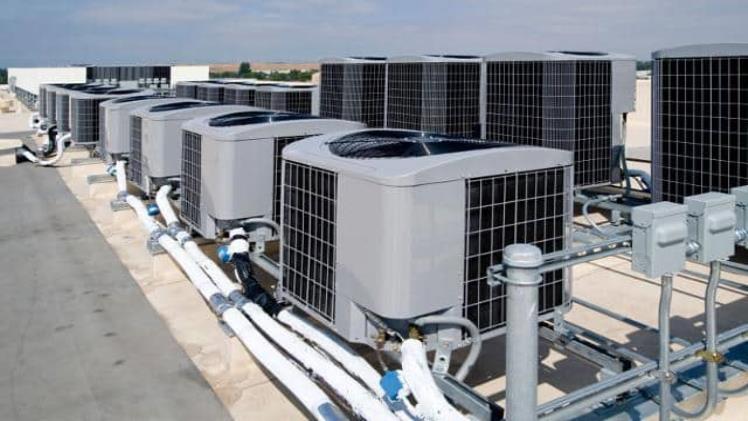Effective air conditioning design is crucial for commercial spaces, ensuring comfort, efficiency, and optimal indoor air quality. Whether for office buildings, retail stores, or industrial facilities, a well-designed air conditioning system enhances productivity, protects equipment, and contributes to a pleasant environment. This article explores the key aspects of commercial air conditioning design, including system types, considerations, and best practices for achieving optimal performance.
Key Aspects of Commercial Air Conditioning Design
- System Type Selection:
Choosing the right type of air conditioning system is fundamental to a successful design. There are several types of commercial air conditioning systems, each suited to different needs and building sizes:
- Central Air Conditioning Systems: These systems use a single, centralized unit to cool multiple areas or the entire building. They are suitable for large commercial spaces and offer efficient cooling with the ability to control temperature across different zones.
- Packaged Units: Packaged air conditioning units combine the cooling and heating components in one unit, typically installed on the roof or ground level. They are often used for smaller commercial spaces or buildings without the need for extensive ductwork.
- Split Systems: Split systems consist of an indoor unit and an outdoor condenser. They are versatile and can be used for medium-sized commercial spaces. They offer flexibility in installation and can be adapted to different cooling needs.
- VRF (Variable Refrigerant Flow) Systems: VRF systems are highly efficient and capable of simultaneously cooling and heating different zones within a building. They are ideal for large commercial buildings with diverse temperature requirements.
- Load Calculations:
Accurate load calculations are essential for determining the appropriate size and capacity of the air conditioning system. Factors influencing load calculations include:
- Building Size and Layout: The total floor area and layout of the building affect cooling requirements. Larger spaces or those with high ceilings may require more powerful systems.
- Occupancy Levels: The number of occupants and their activities impact the cooling load. High-occupancy areas, such as conference rooms or retail spaces, generate more heat and require additional cooling.
- Equipment and Lighting: The type and amount of equipment, as well as lighting fixtures, contribute to the heat load. Computers, servers, and lighting systems generate heat that needs to be accounted for in the design.
- Insulation and Windows: Building insulation and window types influence heat gain or loss. Proper insulation and energy-efficient windows can reduce the cooling load and improve system efficiency.
- Zoning and Temperature Control:
Effective temperature control is achieved through proper zoning. Zoning involves dividing the building into different areas, each with its own temperature control. This approach allows for precise temperature regulation based on the specific needs of each zone. Zoning can improve comfort and energy efficiency by targeting cooling where it is needed most.
- Air Distribution:
The design of the air distribution system is critical for achieving uniform cooling and maintaining indoor air quality. Considerations include:
- Ductwork Design: Properly designed ductwork ensures efficient airflow and minimizes energy losses. Ducts should be sized correctly and installed with minimal bends and obstructions to reduce resistance.
- Air Vents and Registers: Strategically placed air vents and registers distribute cool air evenly throughout the space. The placement should avoid direct airflow on occupants and consider the layout of furniture and equipment.
- Return Air Paths: Adequate return air paths are necessary for effective circulation and maintaining balanced air pressure. Return vents should be located to collect air from all areas of the building.
- Energy Efficiency and Sustainability:
Energy efficiency is a crucial consideration in commercial air conditioning design. An efficient system reduces operating costs and minimizes environmental impact. Key strategies include:
- High-Efficiency Equipment: Select air conditioning units with high Seasonal Energy Efficiency Ratio (SEER) ratings and Energy Star certification.
- Building Management Systems (BMS): Implement a BMS to monitor and control HVAC operations, optimizing performance and energy use.
- Sustainable Practices: Incorporate sustainable design practices, such as using eco-friendly refrigerants and integrating renewable energy sources like solar panels.
Conclusion
Commercial air conditioning design is a complex process that requires careful consideration of system types, load calculations, zoning, air distribution, and energy efficiency. By focusing on these key aspects, businesses can achieve an effective air conditioning system that enhances comfort, reduces operational costs, and supports a sustainable environment. Whether upgrading an existing system or designing a new one, a well-planned approach to air conditioning design ensures optimal performance and long-term benefits for commercial spaces.
Check out Setpoint22 commercial air conditioning design for more.

